The “K class”, Reichsmarine’s innovative ships: After the launch of Emden (1925), the light ‘K’ class cruisers were immediately started on the basis of a modernized armament, three triple turrets, of which the last two were offset from the axis, one further to starboard and the other to port. This strange configuration, never used again, was intended to improve stability as the turret No.2 was barely higher than the N°3. In addition, their open fire traverse area was improved. The engines themselves were also slightly shifted on the other sides to compensate.
Moreover they innovated by adopting a square stern, which was extremely rare in time for large ships, again a condition dictated by weight saving considerations. The “K” class was not official, but used by authors postwar as a simplification because they were named after cities starting with this letter. These cruisers had a short career: Two were sunk during the Norwegian campaign (Operation Weserübung) making Hitler dislike even more the surface fleet, which he did not understood already.
Development
The Könisgberg class was the second one in reality: The first was a 1913 program “repeat” of the Magdeburg/Wiesbaden classes, named after cruisers of the same name already sank during the great war before they were completed, in 1916-17. They were 7125 tons fully loaded, armed with eight 6-in guns and they knew varied fates. One was still active well before the new K class was laid down: French Metz, former Koenigsberg (2), BU in Brest in 1936.
For the new Könisgberg class, German engineers tried to stay within the Versailles Treaty limitation while departing from the Emden, essentially a WW1 design. The great novelty for post-war cruisers of course was turrets with multiple mounts, maximizing firepower at all angles.
In 1924, the imposed limited displacement practically made protection the loser, and only armament and speed were left to play with. As result these cruisers were marked by a very, very light construction: All-welded hulls made possible to spare the weight of bolted assembly and of rivets, but longitudinal strength calculation taking superstructures in accounts were sketchy.
The classic L/B ratio exceeded 11:1 on plans, so the ships were just enlarged destroyers, but at that scale this provoked torsion and durability issues. They will have poor seaworthiness as a result.
Construction
Their construction necessitated welding instead of riveting as said above, a measure which saved weight: Due to the 6000 tonnes limit imposed by the Treaty of Versailles, it was the in fact only assembly method fitting the bill. Furthermore protection was reduced, therefore the superstructure twisted much in the rough northern seas and while weldings were deemed fragile, requiring additional internal supports and bracing (see later, modifications).
The Köln, Königsberg and Karlsruhe keels were laid in Whilhelmshaven in 1925-1926 on behalf of the Reichsmarine (for a 36 million Reichsmarks contract order each). They were launched from 1927 to 1928, and completed for testing in 1929-30. They had been known in German nomenclature as “cruiser B” or “Ersatz Thetis”, Karlsruhe as “C” (“Ersatz Medusa”) and Köln as “D” or “Ersatz Arcona”.
Design specifics
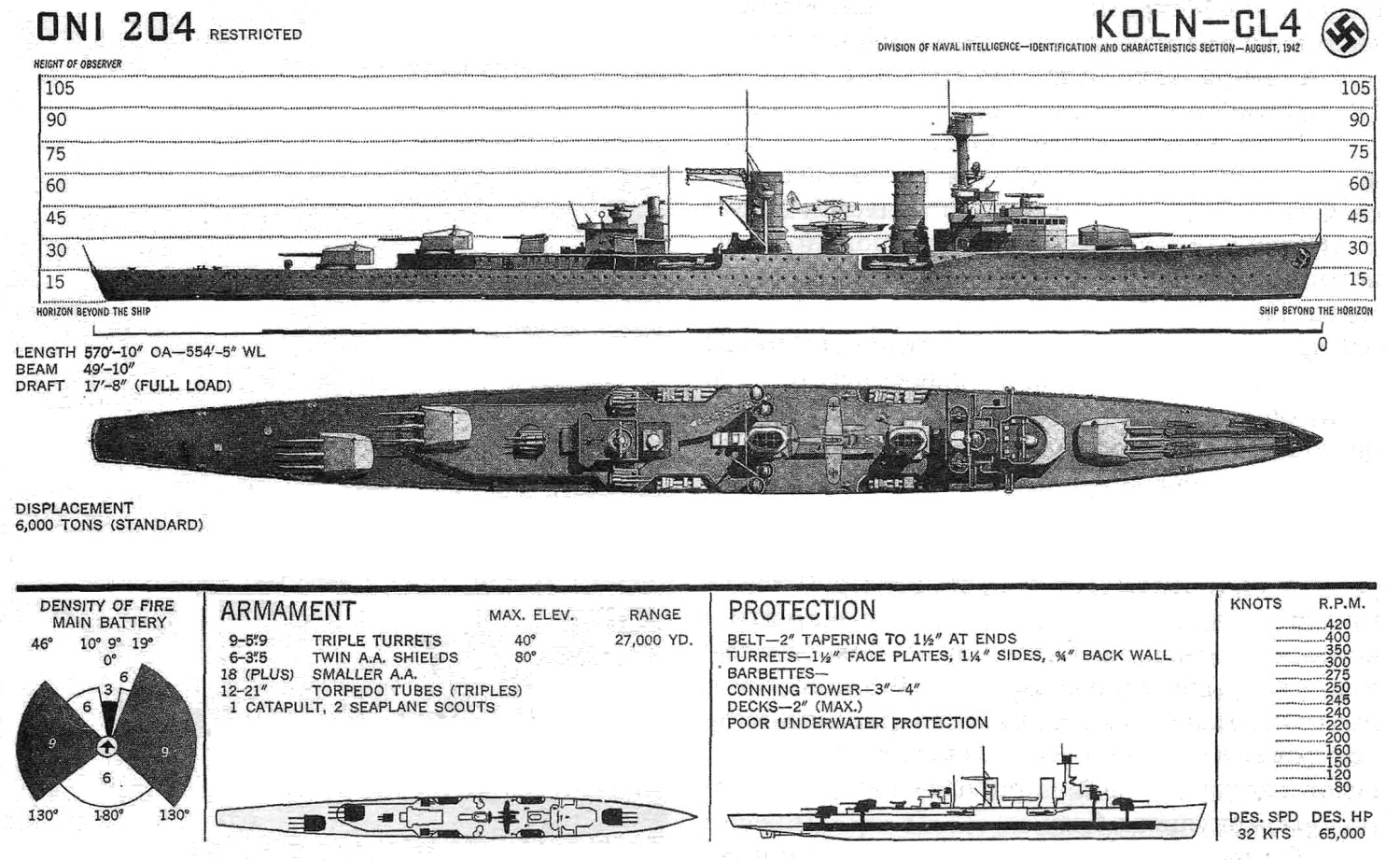
US Navy recoignition and specs sheet
Armament
The Königsberg class Cruisers were armed with new 150mm/60 guns C/25 (weight of a shell of 45.5kg, a firing range of 25.7km). From three triple turrets two took places aft shifted from centreline (“B” turret to port, “C” to starboard) for providing of the maximum fwd arcs of fire.
The cruisers were fitted with catapults operating 2 seaplanes, but they had no hangars due to the lack of room, and the planes were wrapped in hydro-phobe canvas when not in use. Of course the adoption or radars made them obsolete in 1941, and Köln had them removed.
Propulsion
Designed for long distances, they had been fitted with turbines and diesels.
“K” class cruisers were first-ever combat ships with combined diesel-turbine machinery. Each of two shafts could be driven by turbine unit or MAN diesel. The latter ensured 10kts speed, and when turbines worked, diesels were disconnected with shafts. Steam was produced by 6 Schultz-Thornycroft boilers (4 big and 2 small). As a whole machinery has appeared not too successful, besides, it held more than half of hull length that was negatively reflected in damage tolerance.
Protection
Side was covered by 50mm belt beginning before fore and ending after aft turrets. 10mm slope, connecting with its lower edge, became 15mm internal anti-torpedo bulkhead. Belt was closed at ends by 70mm transverse bulkheads, and by flat 20mm armoured deck at upper edge. Turret faces had 30mm armour, roofs, rears and sides had 20mm protection.
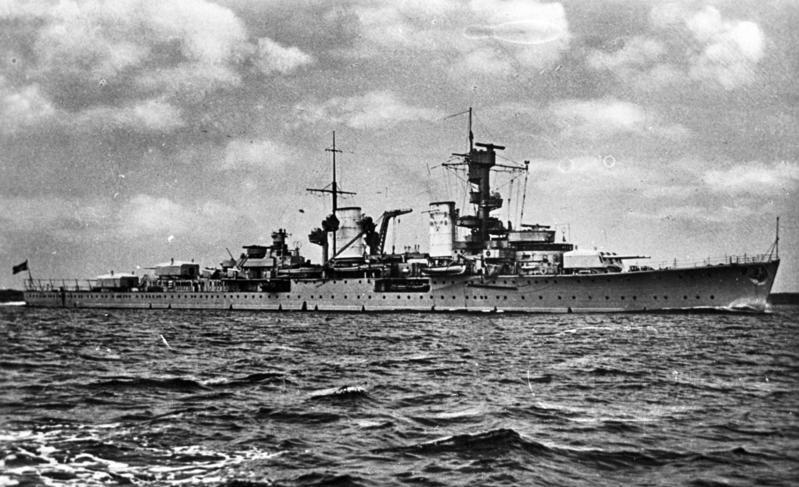
K Class cruisers official photo
Interwar and wartime modifications of the K class
Interwar modifications
On all three ships the original tripod mast was judged too fragile in bad weather and was replaced by a “military mast” for observation.
Their armament varied wildly over time, outside the main turrets: In the Summer of 1929, Königsberg had two twin 88mm/72 SK C/25 AA guns, and Königsberg the same but two additional single, shorter 88 mm/45 SK C/13 DP guns.
In 1934, Königsberg and Karlsruhe had four 4 triple 21-in (533 mm) TT banks and received a single additional 88mm/45 SK C/13, but also four twin 37mm/80 SK C/30 FLAK guns and four single 20mm/65 C/30 while the same year Köln had an additional single 88mm/45, and the same 500 mm TTs and 533 mm banks but also four twin 37mm/80 SK C/30 FLAK, 4 single 20mm/65 C/30 AA guns. By late 1935 they received all three single 88mm/45 and three twin 88/72 SK C/32 AA FLAK guns and a catapult for two Heinkel 60 seaplanes.
Karslruhe’s reconstruction
In 1938-1939 major structural modifications were conducted only on Karlsruhe, seriously damaged by typhoon on Pacific. Indeed KMS Karlsruhe showed such structural weaknesses that she had to be refitted in emergency 1936 in San Diego already. Modifications were made at home later: The hull being strengthened and widened, with an increased breadth on 1.6m (16.8m total). Additional plating was made, with an upper layer of 14mm on the outer upper belt, while the upper deck was reinforced by 16mm. Displacement was increased approximately by 700t, and it jumped overall to 8350 tonnes fully loaded. speed has fallen on 2kts, and endurance to 3340 nm at 18 knots. In 1938, Köln saw also her TTs being deposed but two triple 21-in banks.
At the origin, all three cruisers had a catapult installed between the second funnel and rear firing post, for two He-60 and later more modrn Arado 196 observation seaplanes, but in 1941 they were removed on the surviving Köln which adopted a FuMo 25 radar.
Köln’s wartime modifications
In 1942, Köln’s torpedo tubes were also deposed. After her two sister-ships were lost, KMS Köln underwent other modifications: She received in 1941 a flight deck for an Fl 265 gyroplane, and mots importantly a FuMO 21 radar. By late 1942 her AA armament was revised: two twin 37mm/80, four single 20mm/65, four twin 20mm/65 C/38 and two single 20mm/65 C/38 mm FLAK. In 1944, Köln’s electronics were enhanced considerably: She received a FuMO 25 radar, a FuMB 4 Sumatra and FuMB 6 Palau ECM suites.
The Königsberg class in action
All three ships participated in the peaceful cruise of the German fleet in 1931, carrying besides many cadets. Their wartime career was active, but short: The Köln was indeed the only one to survive the Norwegian campaign, and was confined in the Baltic for the remainder of the conflict. Königsberg was severely damaged in a fjord by Norwegian shore batteries. She was then stationed in Bergen, while the rest of the fleet returning to Kiel. Attacked in April 1940 by a squadron of Royal navy’s Blackburn Skua torpedo planes, she was so badly damaged that she capsized in shallow water and remained there until 1943. Unlisted, she was never salvaged or repaired but dismantled in situ after the war. The Karlsrühe had an even shorter career: Having laid mines and embarked troops to Norway whe was torpedoed at Kristiansand in April 1940 by HMS Truant, being scuttled to avoid capture and achieved by the Torpedo Boat Greif.
KMS Königsberg
Interwar
The lead class ship was commissioned into the Reichsmarine on 17 April 1929. She became the flagship of the reconnaissance force squadron. She started her career making training cruises for naval cadets, goodwill tours especially in the Mediterranean Sea. By 1931 a first modification concerned her foremast, shortened, rear superstructure lengthened. In 1934 her captain was Otto von Schrader, relieved this year by Hubert Schmundt and the same year, additional AA was fitted and she teamed with Leipzig for a first goodwill visit to the UK since the war.
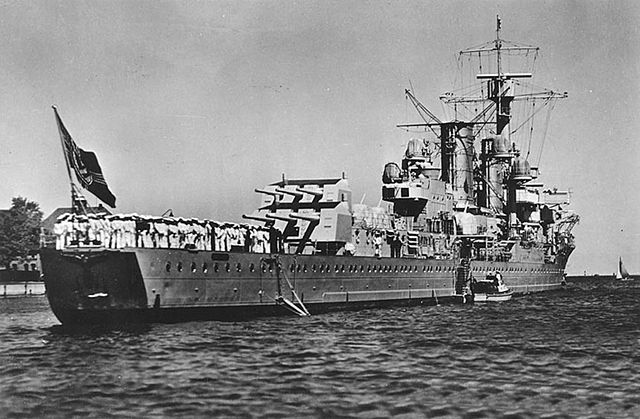
The next year after a catapult and planes were fitted, and triaxially stabilized twin-mount set in place for AA, new Fire control directors for them, the cruiser became a gunnery training ship. She patrolled the coast of Spain during the Spanish Civil War but nonetheless forced Republicans to surrender a German freighter they had seized previously. Königsberg also served back home as a testbed for radar prototypes back home, and was planned to be transferred to the U-boat School but this was interrupted in September 1939
Wartime
At the eve of the invasion used as a scout she first spotted the Polish destroyers Burza and Błyskawica. She escorted a mixed force laying minefield in the North Sea and made training cruisers an exercizes in the Baltic under her new captain Kurt-Caesar Hoffmann, which saw his ship adopting a degaussing coil to prevent damage from magnetic mines. In March 1940, she was attached to the Kriegsmarine invasion force on Norway (Op. Weserubung). She was assigned to Gruppe 3, transporting 600 troops (69th Infantry Division) from Wilhelmshaven to Bergen. She also teamed with her sister-ship Köln, training vessel Bremse, and torpedo boats Wolf and Leopard.
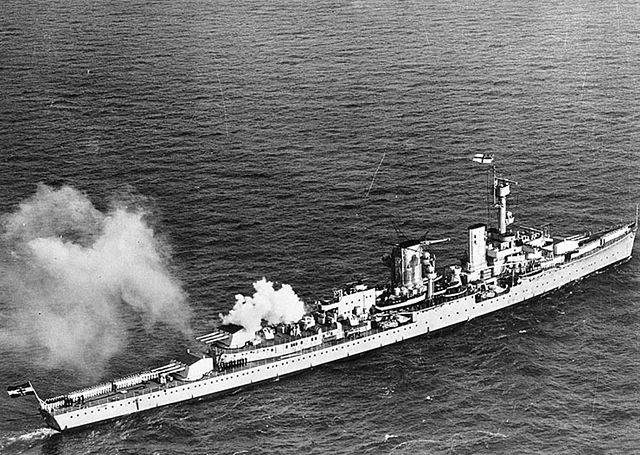
By 9 April, they reached their target, and landed party to several smaller vessels, making then a high-speed run in an attempt to land what left of the infantry directly into the town. However by doing this she placed herself in the targeting sight of a Norwegian 21 cm (8.3 in) coastal battery from the Kvarven Fort. The battery soon scored three hits forward of Königsberg’s hull, causing severe flooding and fires in her boiler rooms. Without power, the infortunate cruiser was now adrift and vulnerable, and resolved to drop anchor. Meanwhile a combined effort of the Köln, the Luftwaffe and later German Infantry from behind, silenced the guns.
Königsberg was temporarily anchored in Bergen for repairs, her broadside facing the entrance in order to repel a possible British naval attack while Gruppe 3 returned home. On the evening of 9 April, she was spotted and attacked the RAF, but was left unscaved. On the 10, a new raid took place with sixteen Blackburn Skua dive bombers (800-803 Naval Air Squadron) which took off from Orkney. They stroke at at 7:20, but the cruiser responded furiously with AA and even light arms. But this did not prevent at least five 500-pound (230 kg) bombs hits, through the paper-thin decks.
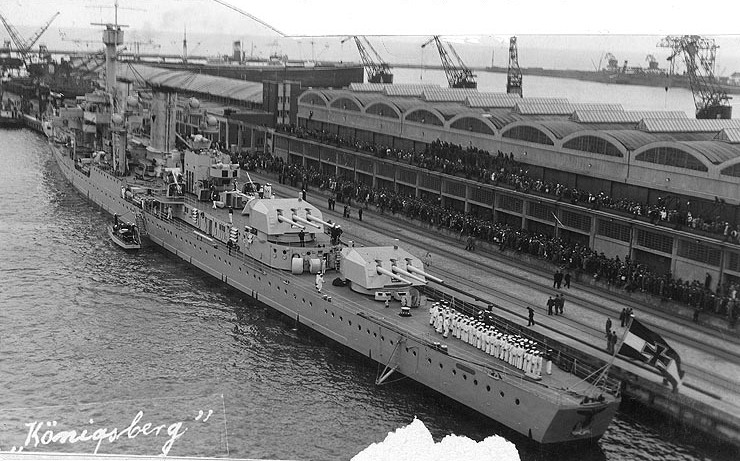
Königsberg’s deck armor was literally pierced through, one bomb going exploding underwater and two near-misses causing massive concussion damage, another blasting the auxiliary boiler room. The concussion was enough to open large gaps into the hull and she took on a heavy list, her captain soon ordering to abandon her. She sank in about three hours, giving the crew a chance to evacuate and remove ammunition and equipment, while 18 were KIA as a result of the bomb blasts. Her remains were raised on 17 July 1942, broken up in situ which was performed until 1943.
KMS Karlsruhe
By November 1929 Karlsruhe was accepted in service before completing sea trials in the Baltic Sea, and going to training. In May 1930, she started her overseas cruise to Africa and South America. She was modernized as her sister-ships and during the next five years, made four more world cruises with cadets, comprising Japan and Asiatic waters in general. Günther Lütjens (yes, this one !) was her captain until September 1935. She made her last training cruise in 1936 but was badly damaged by a tropical storm in the Pacific and she was forced to halt at San Diego for repairs. The hull was repaired and strengthened and she returned home in June 1936, in drydock for last repairs and a major overhaul. When out of dockyard she joined the non-intervention patrols during the Spanish Civil War.
She again put in drydock in May 1938 for another modernization, funnels with raked caps, searchlight platforms, new 10.5 cm AA guns. In November 1939 she was to return in active service, spending time in training. On January, 4, KMS Karlsruhe intercepted the Swedish steamer Konung Oscar transporting Polish refugees. When started Operation Weserübung, the cruiser was used as a troop transport bound to Kristiansand, assisted by an E-boat tender, four TBs and E-boats, departing from Bremerhaven early on 8 April.
When they arrived into the fjord however, thick forg blocked their manoeuvers and they had to wait for it to lift off until the following morning. However as she entered the fjord, she came under fire from Odderøya Fortress. She tried to veer off to present her broadside and started to reply. The artillery duel lasted for about two hours, stopping because of the falling fog again. However the fortess would surrednder later, taken by the rear by landed soldiers.
Karlsruhe left Kristiansand buu was soon spotted by British submarine HMS Truant, positioned just outside the fjord entrance. She fired a spread of torpedoes, and despte Karlsrue evading manoeuver, one torpedo struck her bow and the other amidships, blasting large holes. The massive flooding drawn the engine room and stopped all power, notably running the pumps. Her commander Catpain Friedrich Rieve ordered to abandon ship two hours later. The crew was rescued by the torpedo boat Greif, which later scuttle her, firing two more torpedoes. Her captain was later criticized to not have attempted more to save the ship.

Königsberg after an air attack, Bergen April 1940
KMS Köln

The Köln in 1941. The only K class cruiser to survive the Norwegian campaign.
The last cruiser of the serie or “D” was completed on 15 January 1930 and after the usual sea trials ad exercises on the Baltic sea and was refitted and restarted a serie of extensive sea trials. In late 1932 she started a goodwill tour, taking cadets with her to across the globe, Atlantic, Pacific, Indian Oceans, and Mediterranean Sea. In Australia her crew made headlines by playing football with Royal Australian Navy team in several occasions. She was back for a modernization at home which was completed in 1936, sered for fishery protection and later started non-intervention patrols off Spain during the Spanish Civil War. Before the war in March 1939 she was participating in the annexation of Memel from Lithuania. The the joined Gneisenau, Deutschland, Admiral Scheer, and Admiral Graf Spee for fleet manoeuvers in the Atlantic.
When the war broke put she was posted off the coast of Poland to intercept fleeing Polish ships, but failed in this task (Operation Peking). The Köln also served as a minelayer in the North Sea between September and October 1939, the goal was to draw RN ships to a trap led by stationary U-Boats. A classic tactic already used in WW1. But the plan failed and instead, the RAF sent 12 Wellington bombers, attacjing the German ships, but missing.
In 22 October, Köln, Leipzig escorted Gneisenau and Scharnhorst of their sortie into the North Atlantic. They returned later and were grouped with Deutschland and three torpedo boats to intercept Allied merchant ships in the Skagerrak. On 13 December, Köln, Leipzig, and Nürnberg covered destroyers laying mines off Newcastle.
More importabtly Köln was also sent in Norway for Operation Weserubung, but emerged without major damage. She teamed up with Königsberg as part of Group III charge to invaded Bergen, carrying troops and she supported the German infantry ashore with her main artillery during the assault. By late 1940, she went into drydock for the fitting of a degaussing coil, and she also received a small landing platform for a Flettner Fi 282 helicopter on top of turret “Bruno”; She tested the system (by the way she was the first warship conducting heliborne operations) until 1942.
During Operation Barbarossa her helicopter provided gunfire data in support to the assault of Soviet positions on Dagö, in the Gulf of Riga. She also bombarded Soviet positions on Ristna.
She then participated in various operations in the Baltic until 1942, receiving a modernization of her AA artillery and much needed hull reinforcements. She teamed up with Tirpitz, Admiral Scheer, Nürnberg, searching for Soviet ships trying to flee the eastern Baltic. She was near-missed by Soviet submarine Shch-322 but saved by her escorts. At the end of 1941 she wast back to a drydock. She received there a FuMO 21 radar set. She sailed again to Norway to remain at anchor in a fjord, waiting orders to help attack convoys to Russia, teaming with the Hipper and Admiral Scheer. From there they tried to intercept Convoy PQ 18 but were spotted and attacked by the British submarine HMS Tigris (no torpedo hit their mark).
In February 1943, she was damaged in operation and had to return for repairs in Germany. She was decommissioned in Kiel on 17 February and from then on was confined in the Baltic, converted into a cadet training ship. She also doubled as an escort, to protect in particular against the threat of Soviet destroyers and submarines. However in 1944 she returned to Norway, reaching Kristiansand on 7 July, and laying a defensive minefield in the Skagerrak. She was bombed on December 12, 1944 by the RAF, and joined Whilelmshaven for extensive repairs.
In March 1945, Lancasters in night raids followed by B-24 Liberators from the Eighth Air Force by day destroyed all port facilities, city and ships present. The Köln sank in shallow water, her artillery still emerging, playing a role in delaying US troops advancing towards the town. The Köln was scrapped in 1946 and raised later to be broken up for good in 1956.
Links/src
http://www.navypedia.org/ships/germany/ger_cr_konigsberg.htm
The Königsberg class on wikipedia
The Koln in World Naval ships
John Gardiner, Conway’s all the world fighting ships 1921-1947.
German Light Cruisers of World War II: Warships of the Kriegsmarine By Gerhard Koop, Klaus-Peter Schmolke
Model Corner: K class model kit by Flyhawk models
http://www.shipbucket.com/forums/viewtopic.php?t=3236
KMS Königsberg specifications |
|
| Dimensions | 174 x 15.30 x 6.28 m (571 x 50 x 20.6 ft) |
| Displacement | 6,200 t, 7,830 t FL |
| Crew | 21 officers + 493 sailors |
| Propulsion | 3 shafts, 4 steam turbines + 10 Diesels MAN, 68 000 hp |
| Speed | 32 knots (59 km/h; 37 mph) |
| Range | 5,700 nmi (10,600 km; 6,600 mi) at 19 kn (35 km/h; 22 mph) |
| Armament | 9 x152mm SK C/25 (3×3), 6×88 mm AA, 8×37 mm AA SK C/30, 8×20 mm AA, 12×533 mm TT (4×3), 120 mines, 2 Arado 196 Floatplanes. |
| Armor | Belt: 50 mm, Decks: 40 mm, Conning tower: 100 mm |

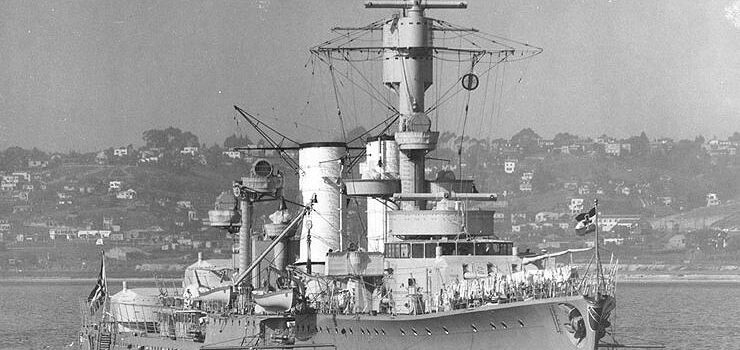

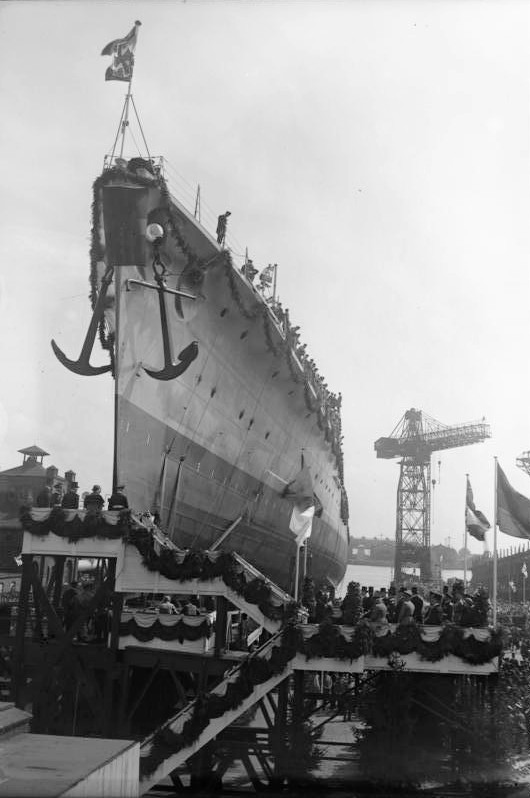
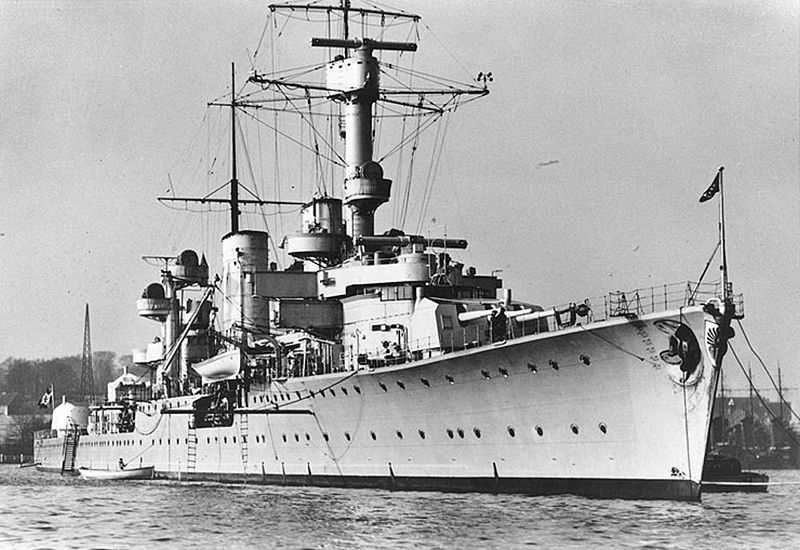
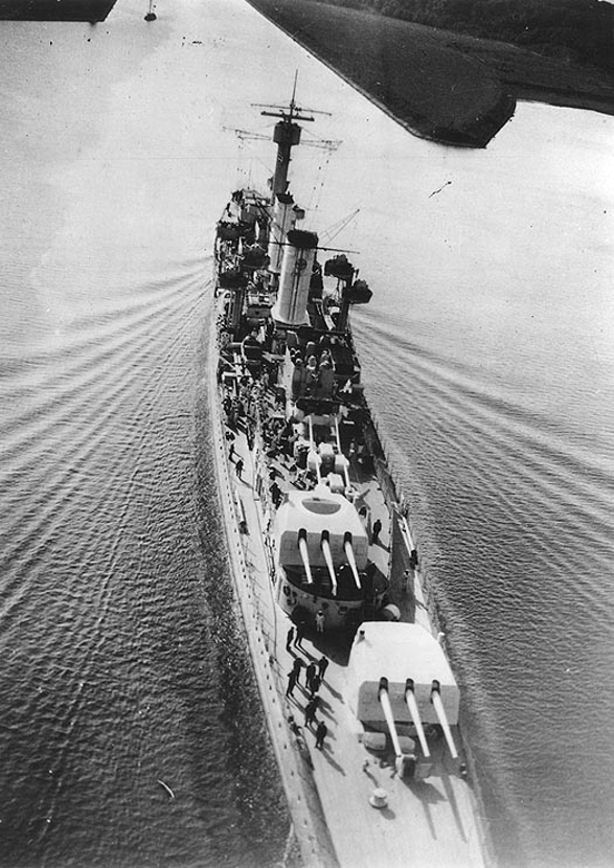


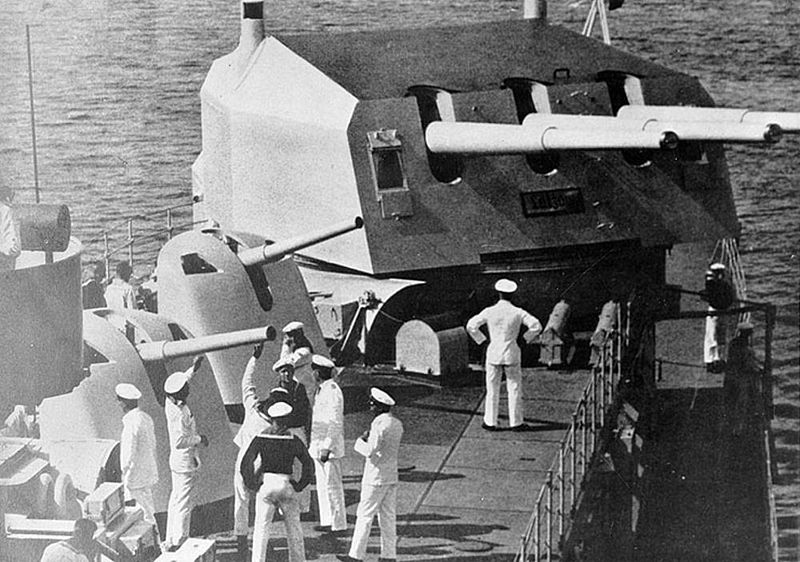
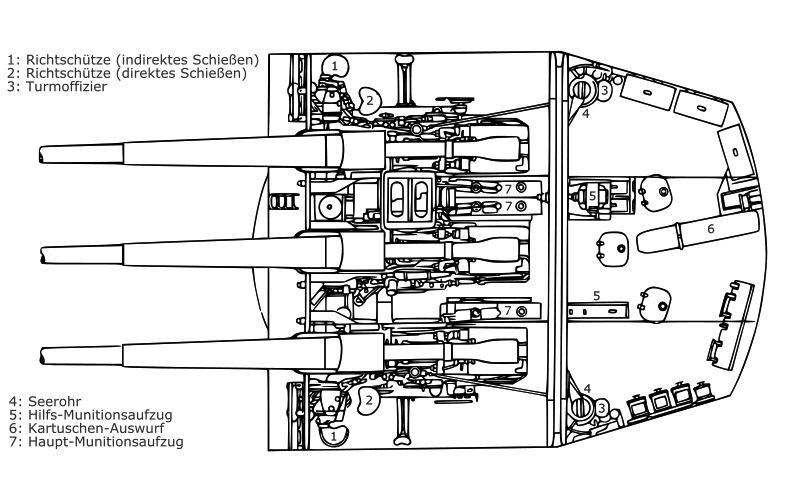
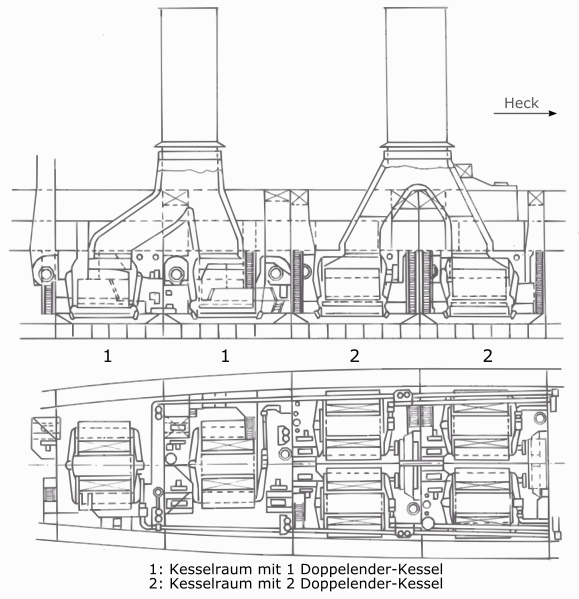
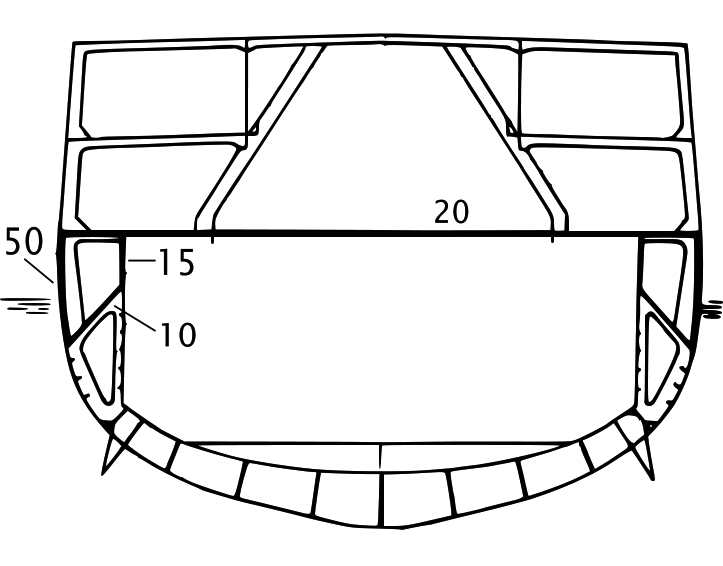
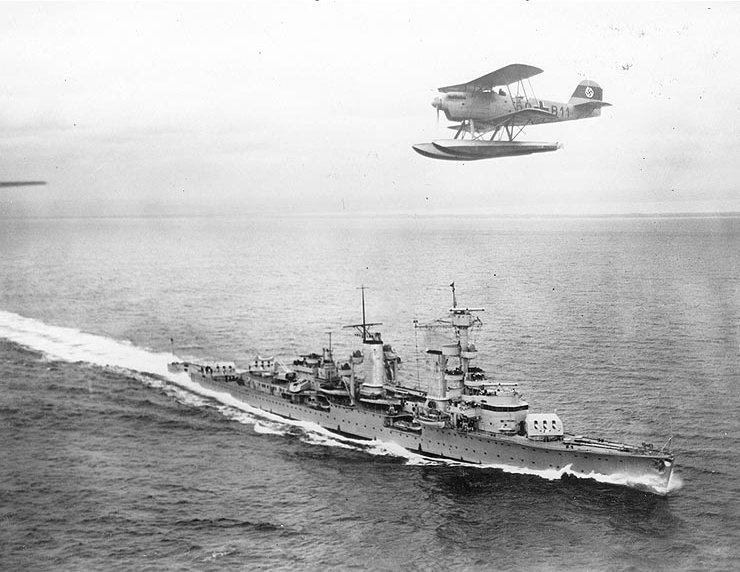


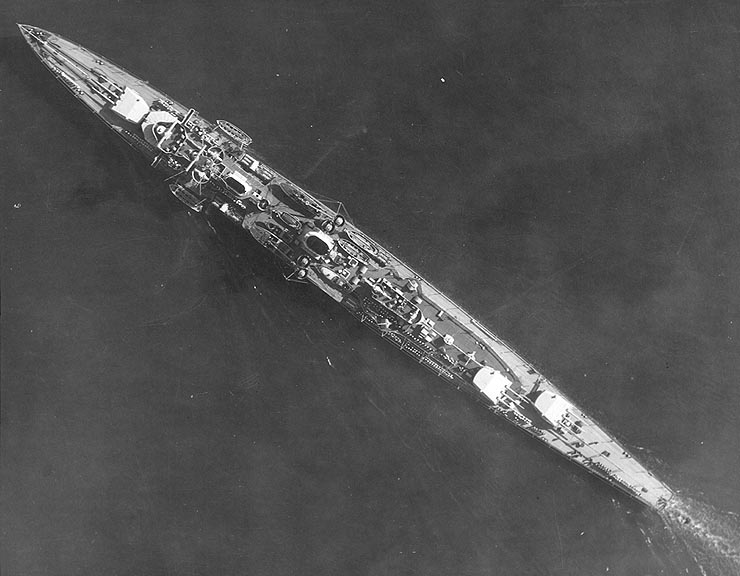
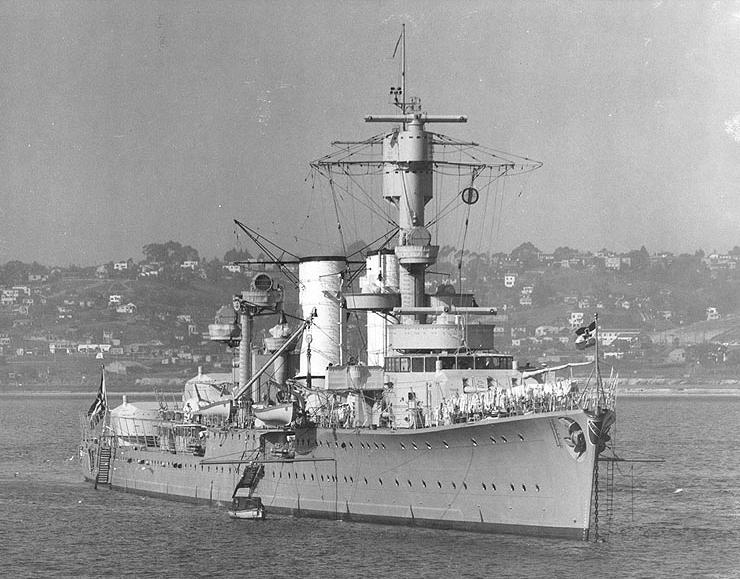
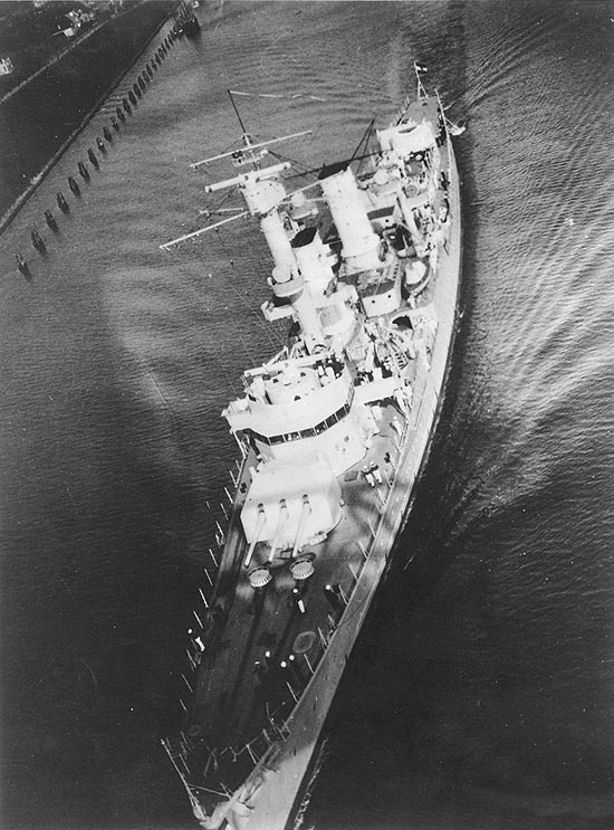
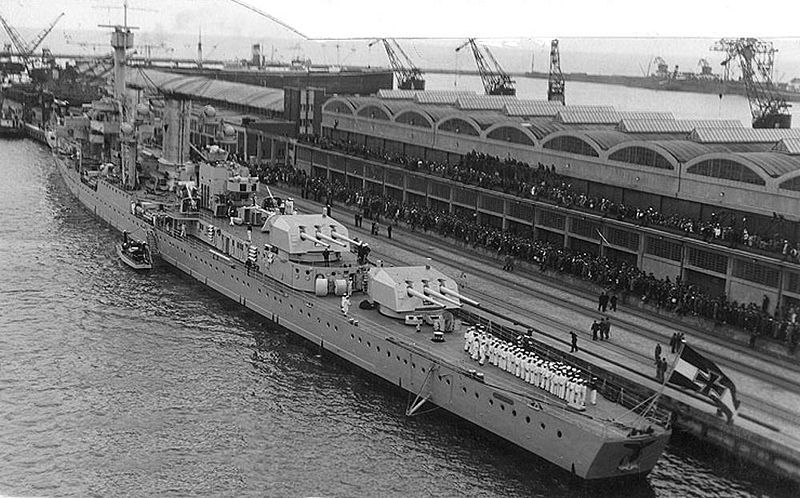
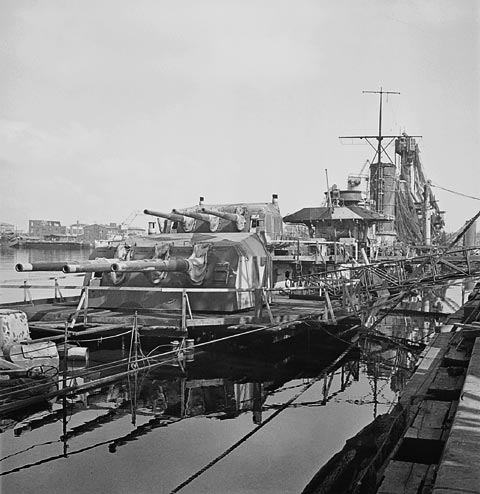
 Latest Facebook Entry -
Latest Facebook Entry -  X(Tweeter) Naval Encyclopedia's deck archive
X(Tweeter) Naval Encyclopedia's deck archive Instagram (@navalencyc)
Instagram (@navalencyc)





 French Navy
French Navy Royal Navy
Royal Navy Russian Navy
Russian Navy Armada Espanola
Armada Espanola Austrian Navy
Austrian Navy K.u.K. Kriegsmarine
K.u.K. Kriegsmarine Dansk Marine
Dansk Marine Nautiko Hellenon
Nautiko Hellenon Koninklije Marine 1870
Koninklije Marine 1870 Marinha do Brasil
Marinha do Brasil Osmanlı Donanması
Osmanlı Donanması Marina Do Peru
Marina Do Peru Marinha do Portugal
Marinha do Portugal Regia Marina 1870
Regia Marina 1870 Nihhon Kaigun 1870
Nihhon Kaigun 1870 Preußische Marine 1870
Preußische Marine 1870 Russkiy Flot 1870
Russkiy Flot 1870 Svenska marinen
Svenska marinen Søværnet
Søværnet Union Navy
Union Navy Confederate Navy
Confederate Navy Armada de Argentina
Armada de Argentina Imperial Chinese Navy
Imperial Chinese Navy Marinha do Portugal
Marinha do Portugal Mexico
Mexico Kaiserliche Marine
Kaiserliche Marine 1898 US Navy
1898 US Navy Sovietskiy Flot
Sovietskiy Flot Royal Canadian Navy
Royal Canadian Navy Royal Australian Navy
Royal Australian Navy RNZN Fleet
RNZN Fleet Chinese Navy 1937
Chinese Navy 1937 Kriegsmarine
Kriegsmarine Chilean Navy
Chilean Navy Danish Navy
Danish Navy Finnish Navy
Finnish Navy Hellenic Navy
Hellenic Navy Polish Navy
Polish Navy Romanian Navy
Romanian Navy Turkish Navy
Turkish Navy Royal Yugoslav Navy
Royal Yugoslav Navy Royal Thai Navy
Royal Thai Navy Minor Navies
Minor Navies Albania
Albania Austria
Austria Belgium
Belgium Columbia
Columbia Costa Rica
Costa Rica Cuba
Cuba Czechoslovakia
Czechoslovakia Dominican Republic
Dominican Republic Haiti
Haiti Hungary
Hungary Honduras
Honduras Estonia
Estonia Iceland
Iceland Eire
Eire Equador
Equador Iran
Iran Iraq
Iraq Latvia
Latvia Liberia
Liberia Lithuania
Lithuania Mandchukuo
Mandchukuo Morocco
Morocco Nicaragua
Nicaragua Persia
Persia San Salvador
San Salvador Sarawak
Sarawak Uruguay
Uruguay Venezuela
Venezuela Zanzibar
Zanzibar Warsaw Pact Navies
Warsaw Pact Navies Bulgaria
Bulgaria Hungary
Hungary

 Bundesmarine
Bundesmarine Dutch Navy
Dutch Navy Hellenic Navy
Hellenic Navy Marina Militare
Marina Militare Yugoslav Navy
Yugoslav Navy Chinese Navy
Chinese Navy Indian Navy
Indian Navy Indonesian Navy
Indonesian Navy JMSDF
JMSDF North Korean Navy
North Korean Navy Pakistani Navy
Pakistani Navy Philippines Navy
Philippines Navy ROKN
ROKN Rep. of Singapore Navy
Rep. of Singapore Navy Taiwanese Navy
Taiwanese Navy IDF Navy
IDF Navy Saudi Navy
Saudi Navy Royal New Zealand Navy
Royal New Zealand Navy Egyptian Navy
Egyptian Navy South African Navy
South African Navy






























 Ukrainian Navy
Ukrainian Navy dbodesign
dbodesign